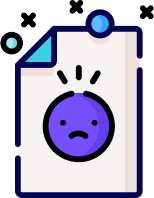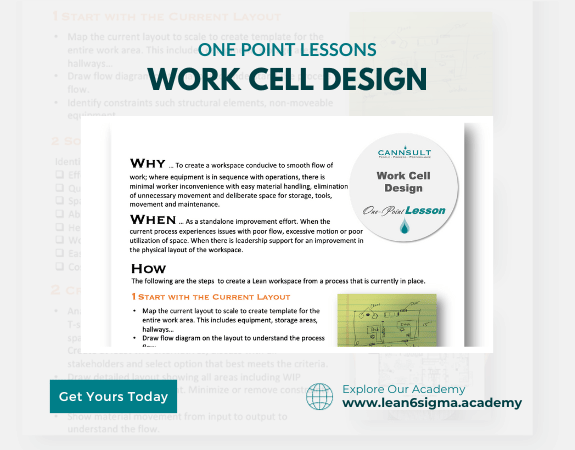Work cell design
Improve Productivity
Improve Quality
Increase Employee engagement
Improve efficiency
Reduce Lead times
Lower Operating costs
Work Cell Design is a structured approach to organizing work areas, equipment, and processes to improve efficiency, reduce waste, and enhance productivity.
Description:
Work Cell Design is a fundamental concept in lean manufacturing and process improvement. It involves creating work environments that are organized, efficient, and conducive to smooth workflow.
Key Principles of Work Cell Design:
Process Integration: Integrate related processes and tasks into a single work cell to eliminate unnecessary movement and transportation.
Simplicity: Keep work cell layouts as simple as possible, minimizing unnecessary complexity and reducing the risk of errors.
Flexibility: Design work cells to be adaptable to changing product or service requirements.
Flow Orientation: Ensure that work flows smoothly within the cell, with minimal waiting times or bottlenecks.
Steps to Implement Work Cell Design:
Define Objectives: Clearly define the objectives for the work cell, such as reducing cycle times, improving quality, or increasing production capacity.
Select Processes: Identify the processes or tasks that are closely related and can be grouped together in the work cell.
Layout Design: Plan the physical layout of the work cell, considering factors like space, equipment placement, and material flow.
Standardize Work: Establish standardized work procedures within the cell to ensure consistency and quality.
Reduce Waste: Implement lean principles to eliminate waste, including minimizing excess inventory, reducing waiting times, and optimizing equipment use.
Visual Management: Use visual cues and indicators to enhance communication and efficiency within the cell.
Benefits of Work Cell Design:
Improved efficiency and productivity
Reduced lead times and cycle times
Enhanced quality control
Lower operating costs
Increased employee engagement and satisfaction
Key Takeaway:
Work Cell Design is a structured approach to organizing work areas and processes for maximum efficiency and productivity. By integrating related tasks, reducing waste, and optimizing layouts, organizations can achieve streamlined and highly efficient operations.

0 Reviews
Riaan is a dynamic leader, coach, facilitator, Lean Six Sigma Master Black Belt with over 20 years of hands-on experience driving business results. Riaan is highly skilled and has worked across diverse industries internationally. With a degree in Chemical Engineering, Riaan started in the major breweries and bakeries in South Africa and was so dedicated to his work that he was often known to take his work home with him.
